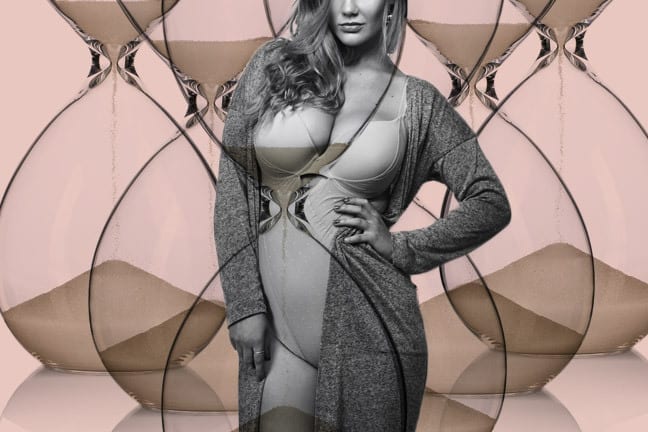Sir Mix-a-lot may not have been enticed by 36-24-36 measurements on a woman, but it can seem like he’s in the minority on that one. It seems like Western society has always has been obsessed with the “hourglass figure,” despite the fact so few of us have Jessica Rabbit proportions. The hourglass shape comes down to a specific waist-to-hip ratio — .70, to be exact.
The most obvious explanation is biological associations with fertility. “When men are looking at women, making snap decisions based on their appeal as potential mates and mothers for their offspring, there happens to be this ratio that winds up drawing men to women,” explained Leslie Goldman, body image expert and author of Locker Room Diaries: The Naked Truth About Women, Body Image and Re-Imagining the ‘Perfect’ Body. “It’s a promising sign of fertility and being able to bear children.”Men, generally speaking, want to spread their seeds, and healthy, fertile women historically have been able to aid in that. So, it only makes sense that if the hourglass shape and that prime, .7 waist-to-hip ratio is the sign of a fertile woman, that men — consciously or subconsciously — seek that out.
But the appeal is not just about being a signifier of baby-making abilities; women perceived as fertile women are also perceived to be healthy. “From a health perspective, when women put on weight around their mid sections, it’s very dangerous for them, so maybe…if [a man] sees a woman with a smaller [ratio], he just assumes on a primal level, ‘Oh, she’s healthy,’” Goldman mused.
Indeed, according to a study done by anthropology professor Elizabeth Cashdan on waist-to-hip ratio across cultures at the University of Utah, women with a low waist-to-hip ratio are more fertile and healthier than those with a high ratio. Large ratios — and the presence of excess body fat in the abdomen — are linked to a greater risk of heart disease, diabetes and breast cancer, and a lessened fertility.
There’s just one problem: so few women — even fertile and healthy ones —actually have that .70 ratio hourglass body. “I don’t come across many women who look that way in real life,” admitted Claire Mysko, the Director of Programs for the National Eating Disorders Association and author of Does This Pregnancy Make Me Look Fat?.
Cashdan’s research seems to back up Mysko’s observation: in a study of normal-weight women in 33 non-Western populations and four European populations, the waist-to-hip ratio was above .80 for nearly all of them, with just a few under that number, and none right at or below the .7 mark. (And it gets more interesting: Cashdan also threw in the stats of over 200 Playboy centerfolds, women whose professional careers are predicated on their body’s shape. The average ratio among them? .68.)
There is some science to back up the hourglass obsession, as well as evidence showing the health and fertility benefits of decreased stomach fat, but it’s hard to ignore pop culture and mass media’s influence. In fact, Kim Kardashian — already in possession of an hourglass figure — recently posted a selfie on Instagram, modeling a corset, touting that she’s “really obsessed with waist training!” And if Kim is working on whittling her waist down, then you can bet her many fans will be, too. “What the culture does is constantly perpetuates an ideal body shape that women should have … so there’s never really acceptance, “ Goldman observed.. “It’s always about striving to be something different or ‘better.'”
So, is it possible to put the brakes on such an unrealistic ideal? Goldman and Mysko hope so. “Whenever one body type is held up as the ideal, that is very dangerous for women,” Mysko warned. She stresses the importance of individual women seeking help if they have recurring negative thoughts or tendencies relating to their own body image — and working to change the outside influences, too, by “trying to change the culture, and trying to advocate for more body diversity in media and advertising, so we’re not just seeing one narrow picture of what beauty looks like.”




































